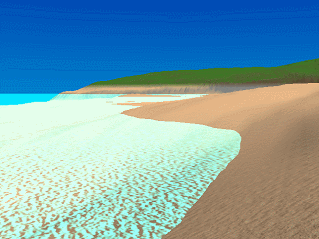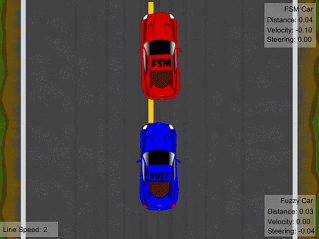|
Links Tech |
An experiment in order to determine if virtual reality had a significant impact on a player’s performance and enjoyment when playing First Person Shooters. This is based off the theory that players do not have very good depth perception in a traditional shooter, and often some of their vision is blocked by the gun’s sight. When aiming with both eyes however, the player has better depth perception and their vision is not obstructed as much. This especially when the player is using a holographic sight. The results of the experiment showed a significant increase in player performance and enjoyment while using the Oculus Rift DK2.

Links Tech |
This DirectX11 scene was created to experiment with different techniques for making procedural terrain. The terrain here is generated by taking a heightmap image do determine the general height of each vertices that make up the island. The original image is a bitmap, and creates very rough terrain which the game then smooths out using a smoothing function. To give the terrain more natural small hill and valley features the heightmap is then displaced with simplex noise. The terrain is then textured procedurally according to its height and the slope of each triangle. Below a certain height flat areas are given a sandy appearance, and then slopes are rocky. Above that same height, flat areas are grassy, and the slopes resemble dirt.
The water in the scene is accomplished by using a simple quad which moves using a sin function to simulate tide. A scrolling texture is also applied to the water to resemble waves. I am still working on this project, and plan to next introduce water reflections and instances of vegetation using a geometry shader.

Links Tech |
This program features two cars which are each controlled using different AI methods. The red car is steered using a Finite State Machine which determines a set amount of steering according to the distance it is away from the yellow race line. The blue car is controlled using a Fuzzy Logic controller which is used to approximate the amount of steering required to get to the line. This results in the over-steering behavior which can be observed when the blue car cannot decelerate perfectly to move on to the line.



